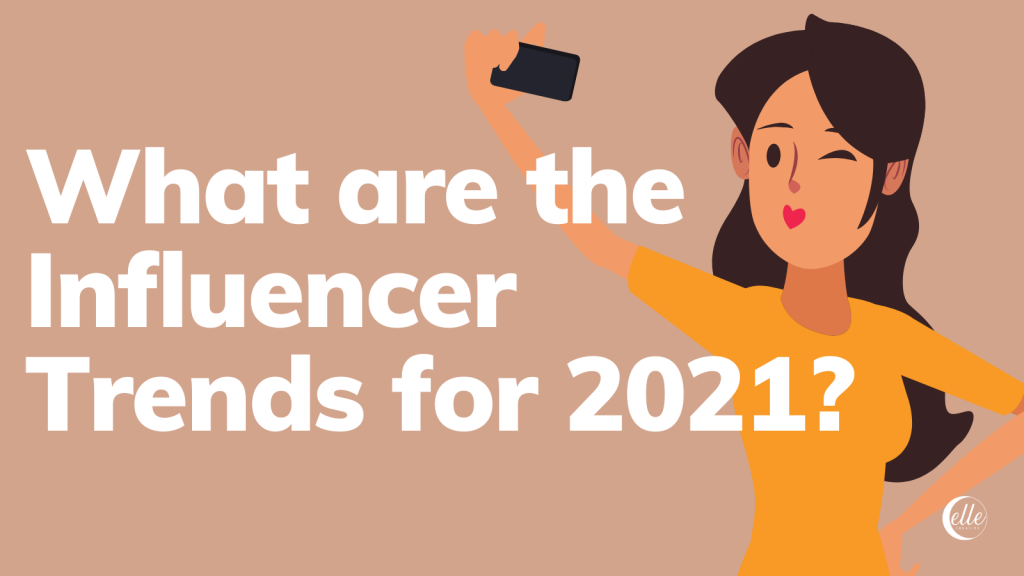“Influencer” has got to be THE word of 2018 to 2020. Influencers have the power to drive more people to your product or service. Consumers trust recommendations from influencers. Every day, consumers are exposed to a very large number of ads. In order to avoid this, most potential buyers have installed ad blocking applications. Influencer marketing finds a way around this, as the source is embraced by the consumer and sends a relevant message.
Influencer marketing was already labelled as one of the most successful marketing strategies and will continue to be for 2021 but with lots of twists. With most brands relying on online presence because of COVID-19, planning an influencer marketing strategy now needs more than just a concept and influencer selection.
Many brands did not get the results they wanted from influencer campaigns. Mistakes that were made with influencer strategy in 2020 include
- Emphasis on reach and follower count
- Inability to measure the effectiveness of the influencer campaigns
- Executing influencer marketing campaigns like ads
- Failing to identify who are the genuine influencers
- Miscalculated expectations from the campaign
So what are we looking at for influencers this year?
1. Images will no longer be a crucial part of influencer marketing campaigns, it’s all about videos now.
Instagram, as we all know, is the most important platform for influencer marketing and at first the platform was highly focused on images; as such influencers utilized photo content the most but with the newly added features, the focus has shifted to video content. There are now reels, Instagram live and IGTV. Not to mention TikTok being the ‘hot’ app on the rise. In the upcoming year, videos will more or less replace images. Influencer marketing statistics suggest that videos attract more audiences than images on social media.
2. Tons of followers? Okay, but who exactly is following? Focus on influencers who are niche-specific .
Social media users have their set of preferences and are very much aware of why they are following a specific influencer and page on social media. This is why brands will need to rope in influencers that stick to their niche.
Tumore prostatico: la prognosi in base a stadio, grado e rischio
Selling a vegan cookbook? Use a vegan, health conscious, lifestyle influencer who shares much about what they eat, not someone who posts mostly makeup selfies and skincare videos. Users are looking for valuable content and brand influencers following one particular niche are the best bet for the upcoming year.
3. Social media users get bored easily. Content needs to be interactive and dynamic.
Users are no longer interested in passive communication. For your influencer marketing campaign to succeed, it needs to be interactive. Simply putting out videos or images and expecting people to respond won’t work. Make sure your content encourages the users to participate and conveys the intended message effectively. Be it tagging friends or simply responding to a poll on Instagram story, everything can work in your favour if your content is interesting and worth responding to. A fairly recent Instagram interactive feature is the ‘swipe up’ otherwise known as a call to action (CTA) link. While the CTA link is a great interactive feature, its only available to pages who have in excess of 10,000 followers. Pages with less than 10,000 followers are dependent on influencers to push traffic to their website and drive CTA with the link feature in their BIO. Ensure your bio link pushes your followers where you you want them to go, whether thats your website or a special promotional landing page.
4. “..Show me somethin’ real..” Fewer edits and more authenticity – natural is IN.
With the plastic surgery trend taking over social media the last 2 years, social media users are now heavy on the ‘natural body’ support. Social media posts that are real, unfiltered, and unedited can attract more attention from the users (depending on the influencer and their audience). It can be rightly said that perfectly edited pictures have lost their charm because they are overdone and users now want to see content in its original form. Brands can come up with posts like behind-the-scenes videos, bloopers, etc, to keep the audience engaged. When it comes to marketing to Gen Z, they should be recognized for their unique characteristics: They tend to be drawn to quality over quantity in social media, they value individual expression, and above all, they greatly prefer brand authenticity and companies that are transparent about their stances on social causes.
5. A Focus on Diversity and Inclusion
2020’s increase in social activism spotlighted a lack of diversity in influencer marketing and inequality faced by black content creators specifically. With many brands being held accountable for tokenism or unfair pay, a lot of content creators were vocal about how there needs to be more representation in influencer marketing.
6. More Ongoing Partnerships vs. One-Offs
Influencers will become true brand partners in 2021, with brands investing in ongoing relationships over an extended period of time. Influencers will be moving past the simple sponsored post or story and create a more unique way to join forces, like a signature line of products, for example. Influencer partnerships will emerge. In this collaborative approach, influencers will work together to create content for a particular brand. This approach is already taking shape and is likely to become a norm in the upcoming year. This will also influence how brands work with influencers and how they conceptualize their campaigns.
7. “But who exactly are you?” Deeper Connections and Value-Driven Content
In 2020, influencers and brands took a step back from perfectly curated feeds to get a little more “real” with their followers. With a continued push toward driving deeper connections and relationships –- coming from users and Instagram themselves –- influencers have begun creating more value-driven content and are giving their audience a real glimpse into their lives. People want to see their authentic selves. We might be seeing Q&A’s, YouTube videos, sharing silly memes, or even showing off the “not so glamorous” sides of their lives. We are beyond likes and followers, companies will now be looking at the comments the influencer receives on their posts and the way they connect with their audience on Instagram Stories. Saves are a new thing in Instagram insights, therefore influencers need to ensure their content is save and share worthy.
8. Move over Instagram. New social platforms and creator tools emerge.
This year, new platforms and Instagram tools flooded the social scene giving influencers more creative sharing power than ever. One of the most notable additions to the social platform line-up is the ever-growing, insanely popular app, TikTok. Brands will possibly be investing more money into TikTok. Instagram influencers have already started taking the plunge into the new platform. With the recent features guides and reels on Instagram, this year’s influencer content should be rather creative and engaging.
9. The rise of the micro and nano influencers!
This is mainly due to high engagement, authenticity, and low-costs and is relevant in the current scenario as most brands have slashed budgets. Initially, brands only had to care about what influencers with a high number of followers posted about their products and services. However, with high social media exposure, even regular users have started posting reviews and thoughts on brands through stories and posts. This means that every review counts and every user can be labelled as a nano influencer. In short, brands will have to take every user seriously in 2021 regardless of how many followers they have!


